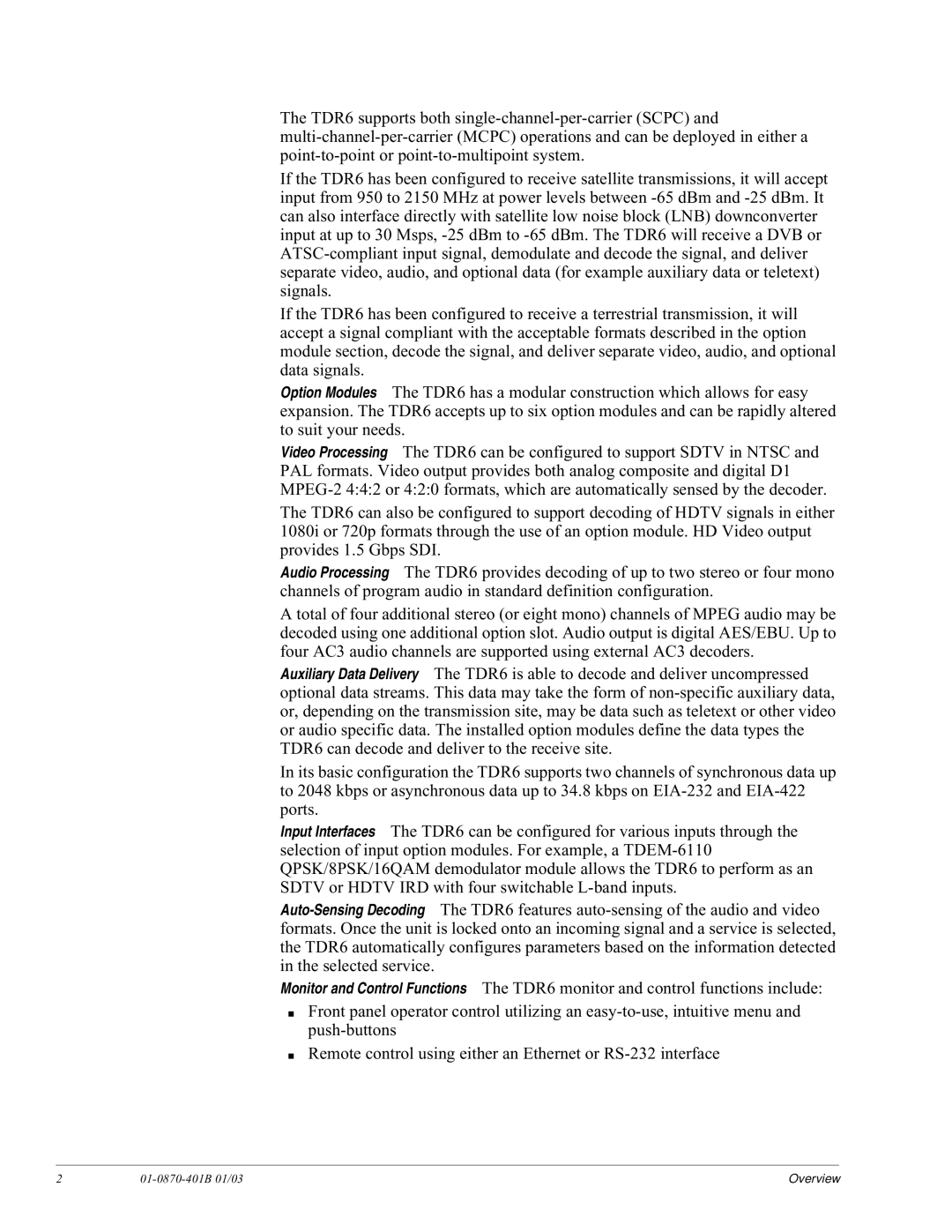The TDR6 supports both
If the TDR6 has been configured to receive satellite transmissions, it will accept input from 950 to 2150 MHz at power levels between
If the TDR6 has been configured to receive a terrestrial transmission, it will accept a signal compliant with the acceptable formats described in the option module section, decode the signal, and deliver separate video, audio, and optional data signals.
Option Modules The TDR6 has a modular construction which allows for easy expansion. The TDR6 accepts up to six option modules and can be rapidly altered to suit your needs.
Video Processing The TDR6 can be configured to support SDTV in NTSC and PAL formats. Video output provides both analog composite and digital D1
The TDR6 can also be configured to support decoding of HDTV signals in either 1080i or 720p formats through the use of an option module. HD Video output provides 1.5 Gbps SDI.
Audio Processing The TDR6 provides decoding of up to two stereo or four mono channels of program audio in standard definition configuration.
A total of four additional stereo (or eight mono) channels of MPEG audio may be decoded using one additional option slot. Audio output is digital AES/EBU. Up to four AC3 audio channels are supported using external AC3 decoders.
Auxiliary Data Delivery The TDR6 is able to decode and deliver uncompressed optional data streams. This data may take the form of
In its basic configuration the TDR6 supports two channels of synchronous data up to 2048 kbps or asynchronous data up to 34.8 kbps on
Input Interfaces The TDR6 can be configured for various inputs through the selection of input option modules. For example, a
Monitor and Control Functions The TDR6 monitor and control functions include:
■Front panel operator control utilizing an
■Remote control using either an Ethernet or
2 | Overview |
